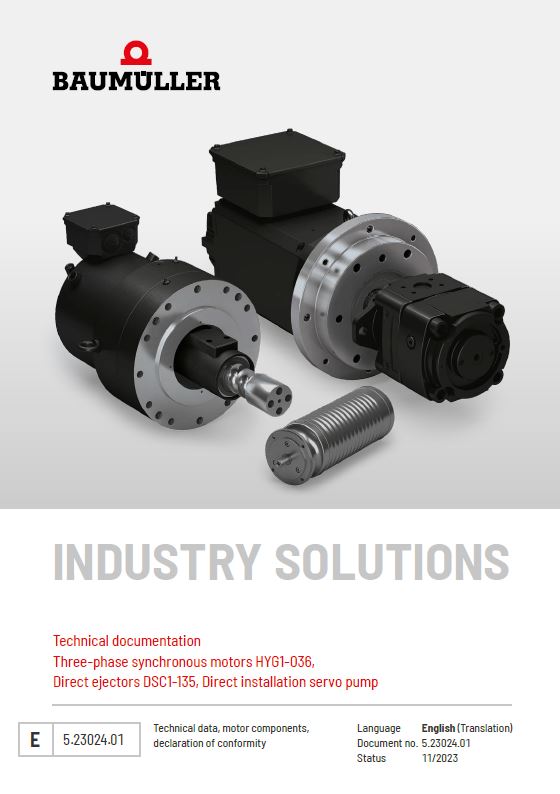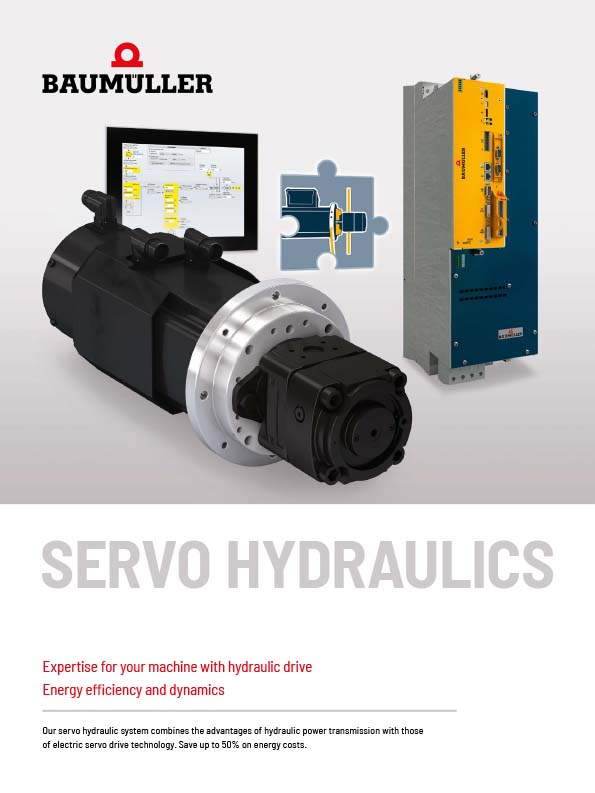Servo pumps
 Expertise for your machine with hydraulic drive
Expertise for your machine with hydraulic drive
Baumüller supplies innovative and optimized drive solutions for all sectors through years of intensive cooperation with mechanical engineers. Due to the integrated control unit in the converter, Baumüller servo pumps can easily be connected to your machine control systems. In the process, they reduce the energy consumption of your drive system significantly and also allow for shorter cycle times, greater accuracy as well as lower noise development. See for yourself and rely on the flexibility and power of innovation of the experts from Baumüller.
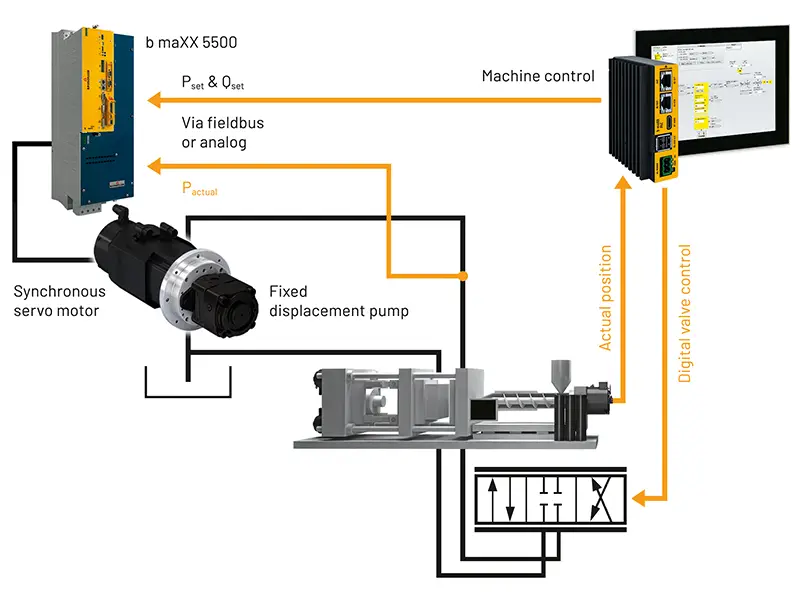 Example of the structure of a drive system with a servo pump in an injection molding machine
Example of the structure of a drive system with a servo pump in an injection molding machine
The drive system with servo pump
Baumüller's servo pump combines the advantages of hydraulic power transmission with the benefits of electric servo drive technology.
Servo pump drives for the hydraulic supply consist of a fixed displacement pump driven by a servo motor. The flow rate and pressure can be controlled precisely by highly dynamic changing of the motor speed. If neither flow rate nor pressure are required, the motor stops and does not consume any energy.
Baumüller undertakes the design of the entire drive system, including the pump, motor, and the servo drive.
Combine hydraulic and servo technology and save up to 50% of energy costs
Annual electricity costs of a conventional hydraulic machine with 300 days of continuous operation and electricity costs of € 0.19 per kWh:
30 kW/h * 7,200 h * € 0.19 per kWh= € 41,040
Reduction of the energy consumption typically by 30%:
€ 41,040 * 0.3 = € 12,312
Amortization of initial costs:
< 1 year
This does not include:
- Reduced cycle times
- Improved accuracy
- Lower air conditioning requirement
- Smaller cooling system
- Longer service life of oil, etc.
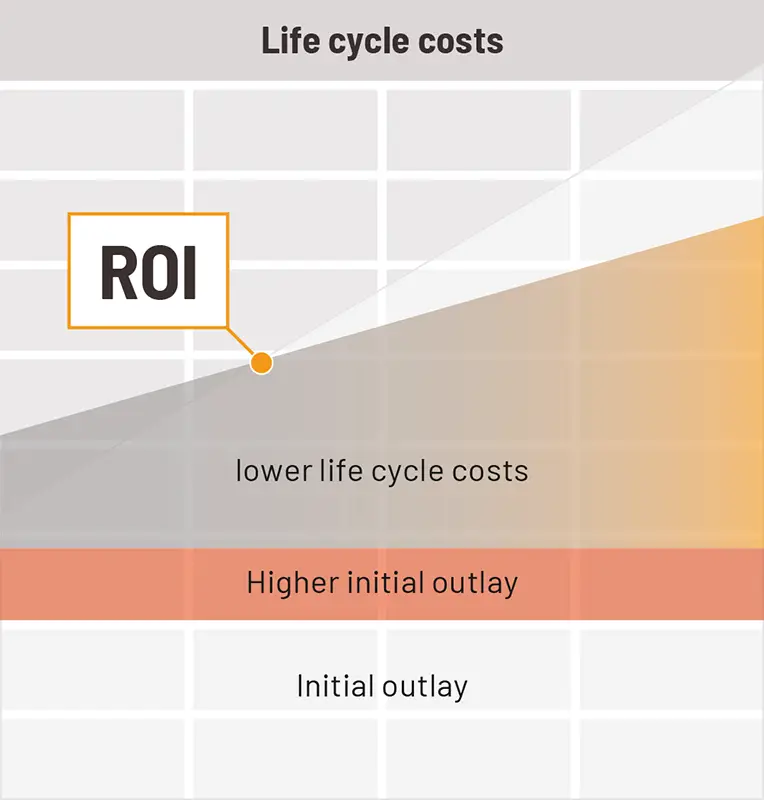
 ► The Best of Both Worlds:
► The Best of Both Worlds:Combine Hydraulic and Servo Technology and Save Up To 50% of Energy Costs
What is a servo-hydraulic drive system?

I agree that external content may be displayed to me,
which means that personal data may be transmitted to third-party platforms.
Read more about this in our privacy policy.
Injection molding application
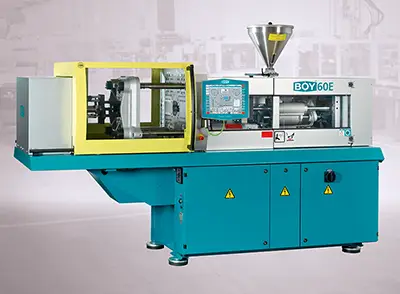 The principle of servo-hydraulics can be very well illustrated in the example of the cycle of an injection molding machine. The manufacturing of plastic cups or bottle stoppers consists of six steps:
The principle of servo-hydraulics can be very well illustrated in the example of the cycle of an injection molding machine. The manufacturing of plastic cups or bottle stoppers consists of six steps:
Tool closing, injecting, holding pressure, dosing, cooling period, tool opening, ejecting.
These production steps are highly differentiated, meaning that within one process step the injection molding machine has widely fluctuating output requirements. Closing and injection sequences require large quantities of hydraulic oil and a high volumetric flow. Cooling times, on the other hand, require no or just minimal output.
The difference in energy consumption can be clearly seen in the typical hydraulic system shown in the diagram. The high energy efficiency of the servo-hydraulic solution arises from a needs-specific pump output. When the machine is at rest, e.g. during cooling, then the motors will also be at rest and will consume no energy.
Press application
An additional example is presses. The cycle in the figure is divided into three partial cycles: lose press (compacting the material), dwell time, press back and handling. The comparison of energy consumption between the three different systems shows that the solution with a servo pump in the individual partial cycles has a significantly lower power input and thus has a significantly lower energy consumption overall. Unlike conventional hydraulic systems, only the energy that is actually needed is used, while in the classic systems the losses are higher due to the constant revolution of the standard motor in rest phases, such as when stopped (see figure).
Other application examples for servo pumps
Injection molding machines and presses are not the only applications for servo-motor pumps. The use of a servo-hydraulic system is a sensible option wherever phases with high power requirements alternate with pause times in the machine cycle, such as in stamping and bending machines.
The advantages of hydraulic power transfer and electric power setting using servo technology combined, as an alternative to hydraulic pressure and volumetric flow control, yields an energy-efficient and cost-effective solution in the form of a dynamically controllable servo pump.
The hardware: Performance boost for your machine
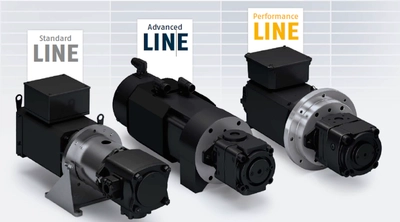 Fixed displacement pumps are generally used in servo-hydraulic systems. Baumüller can work with any of the standard pump manufacturers on request. Numerous manufacturers have their own series for variable-speed operation in their product range that exactly meets the requirements of servo-hydraulic systems and is designed for high accelerations. Compared to an uncontrolled hydraulic system with a standard motor, the pump will be smaller because decoupling from the power frequency takes place. This allows a higher speed and smaller pump dimensions.
Fixed displacement pumps are generally used in servo-hydraulic systems. Baumüller can work with any of the standard pump manufacturers on request. Numerous manufacturers have their own series for variable-speed operation in their product range that exactly meets the requirements of servo-hydraulic systems and is designed for high accelerations. Compared to an uncontrolled hydraulic system with a standard motor, the pump will be smaller because decoupling from the power frequency takes place. This allows a higher speed and smaller pump dimensions.
As a special feature, Baumüller offers three different options for the connection between the pump and the motor. In the Standard Line, the attachment is made using the conventional solution of coupling and pump support. This tried-and-tested option can be achieved with a standard motor shaft and motor flange and is flexible due to the separate components. The second development stage, the Advanced Line, designates the direct attachment of the pump on the motor via internal toothing. Here, there is no need for a pump support and coupling, so the system is more compact and robust. Omitting the pump support as a resonating body also reduces the noise impact.
In the third stage, the Performance Line, the hydraulic fluid is additionally used for intelligent circulating oil lubrication. For this purpose, connections were added not only to the motor but also to the fixed displacement pump, allowing the leakage flow of the pump to be used for the permanent lubrication of the toothing. This eliminates an otherwise necessary grease lubrication of the internal toothing, which would be due every 3,000 operating hours on average, also rendering the system particularly robust. Baumüller thus offers a patent-pending solution, which leads to significantly reduced service costs in operation.
Motors
Permanent magnet synchronous motors are used as motors in servo-hydraulic systems. The main criterion for selecting servo motors is good performance in terms of dynamics and overload capacity.
Baumüller offers various motor series for use in servo-hydraulic systems, from the dynamic three-phase current servo motor DSD2 to the three-phase current synchronous motor DS2. All motors are available in an air-cooled and a water-cooled version. Size 45–132 servo motors are also available in an oil-cooled form. This is an advantage in the hydraulic system, since the oil is available in the machine anyway. Another advantage is that liquid-cooled motors have a higher power density and can therefore be dimensioned smaller.
Advanced Line – direct attachment with grease lubrication
| Pump type | Motor size 56 | Motor size 71 | Motor size 100 | Motor size 132 |
|---|---|---|---|---|
| Bosch PGH2 (5-8 ccm) | on request | - | - | - |
| Bosch PGH3 (11-16 ccm) | - | available | - | - |
| Voith IPV3 (4–10 ccm) | - | available | - | - |
| Bosch PGH4 (20–50 ccm) | - | available | available | - |
| Voith IPV4 (13–32 ccm) | - | available | available | - |
| Eckerle EIPC3 (20–64 ccm) | - | available | available | - |
| Voith IPV5 (32–64 ccm) | - | - | - | availablet |
| Eckerle EIPC5 (64–100 ccm) | - | - | - | available |
| Voith IPV6 (64–125 ccm) | - | - | - | available |
| Eckerle EIPC6 (125–250 ccm) | - | - | - | available |
| Bosch PGH5 (63–250 ccm) | - | - | - | available |
Performance Line – direct attachment with circulating oil lubrication
| Pump type | Motor size 56 | Motor size 71 | Motor size 100 | Motor size 132 |
|---|---|---|---|---|
| Bucher QXM23 (5–8 ccm) | on request | - | - | - |
| Bucher QXEH(X)3 (10–16 ccm) | - | available | - | - |
| Bucher QXEH(X)4 (20–32 ccm) | - | - | available | - |
| Bucher QXEH(X)5 (40–63 ccm) | - | - | available | available |
| Bucher QXEH(X)6 (80–160 ccm) | - | - | - | available |
Drive Intelligence for servo hydraulics

I agree that external content may be displayed to me,
which means that personal data may be transmitted to third-party platforms.
Read more about this in our privacy policy.
Write us a message, our sales experts will be happy to advise you.
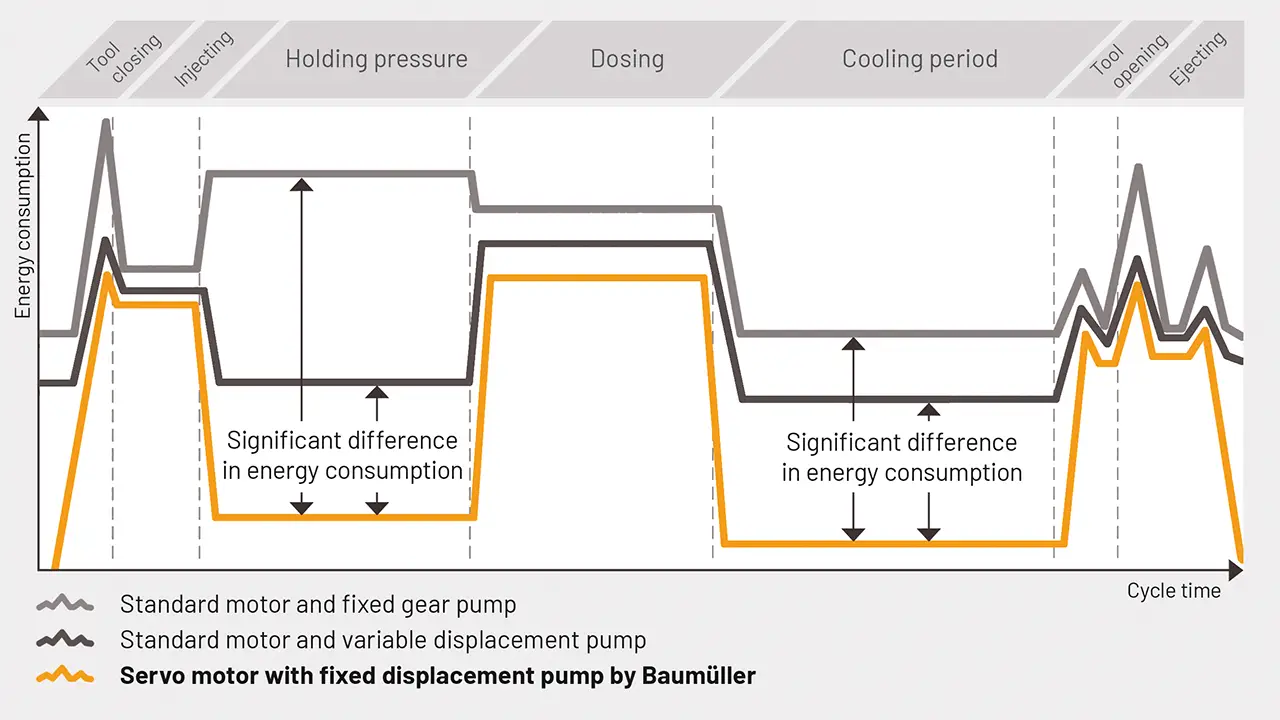
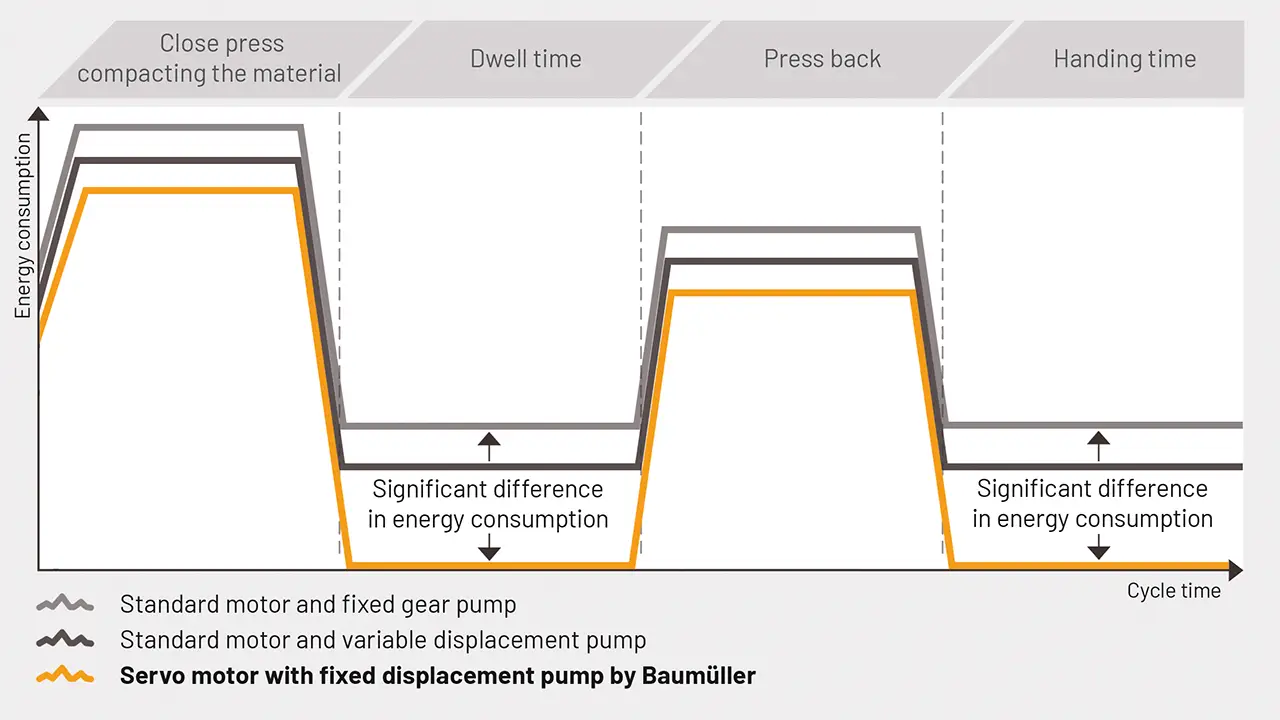
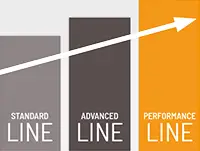 Direct attachment is available for the Advanced and Performance Line models. The following motor-pump combinations are possible. The Standard line, attachment via coupling and pump support is possible with all the motors listed here.
Direct attachment is available for the Advanced and Performance Line models. The following motor-pump combinations are possible. The Standard line, attachment via coupling and pump support is possible with all the motors listed here.